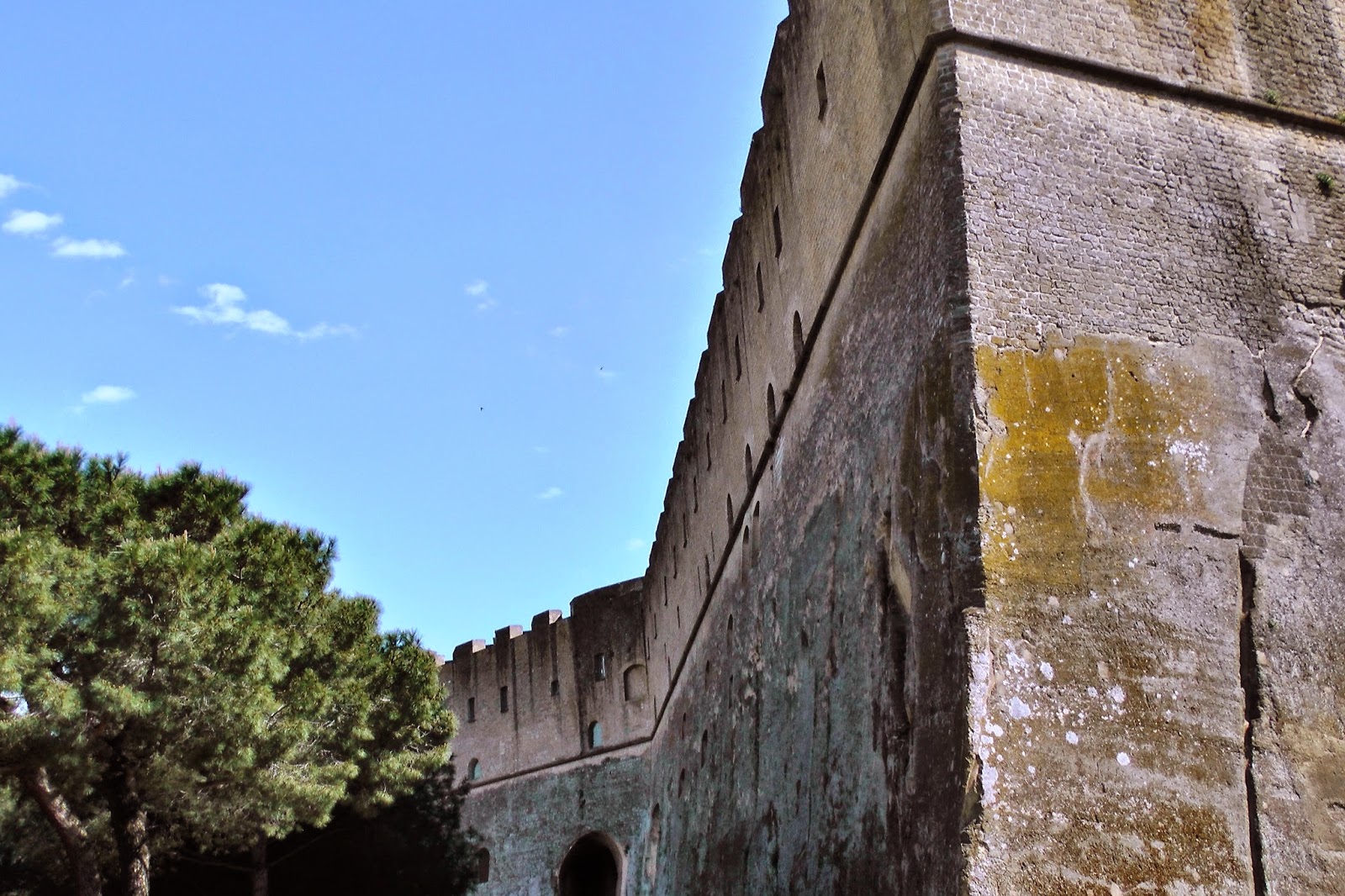NAPLES SEEN FROM CASTEL SANT'ELMO
Robert d'Anjou, son and successor of Charles II, decided to extend the palace on the top of St 'Erasmus Hill and in 1329 commissioned Tino di Camaino of Siena to work on its refurbishment. After the death of Tino di Camaino in 1336, the architects Attanasio Primario and Francesco di Vico continued his work. The work came to a close in 1343.
The fort was damaged by the 1456 earthquake which caused a partial collapse of the boundary walls and the Towers. So the Aragonese sovereigns started a recovery operation, as they intended to reinforce defence structures. It was in the years from 1537 to 1547 that the castle took on its characteristic configuration of a six-point star.
This happened during the rebuilding ordered by the Viceroy Don Pedro de Toledo who intended to enclose Naples in a compact defence structure surrounded by the Neapolitan Castles. He commissioned the famous military architect Pedro Luis Escrivà to build the fortifications.
The Castle was characterised by a double tenaille layout, artillery located in the bastions and tall wall surrounded by a moat; it responded to modernization requirements brought on by the implementation of heavy weapons. It represented also a lookout point for the sea attacks, but also responded to the need of control and repression of the city itself.
The fortess represented a sort of autonomous citadel, where the the lord of the manor had civil and military jurisdiction.
In 1587 a lightnig struck the powder-magazine, causing great damages. The architect Domenico Fontana managed the recovery work, which began in 1599 and ended in 1610.
From 1604 the fortification began to be used as a jail for politial prisoners. One of these was Tommaso Campanella, accused of heresy. Here spent time the protagonists of the Neapolitan Revolution Gennaro Serra, Mario Pagano, Luisa Sanfelice who then were exexuted in Piazza Mercato.
In 1976 began an impressive restoration of the fortress which brought to light the original structure. In 1982 the monumental complex was handed over to the Superintendency for Artistic and Historic Heritage.
Castel Sant'Elmo and Certosa of San Martino
The entrance
The Church of Sant'Erasmo, built by the spanish architect Pietro Prati in 1457, was rebuilt by the architect Domenico Fantana after a violent explosion in 1547. Within it lies the funerary monument of the first castellan, Pedro de Toledo, cousin of the spanish viceroy, whose name he shared.
The other buildings in the Piazza, designed by the architect Pedro Luis Escrivà de Valencia, were used as military lodgings, to house the governor and for garrison duties.
Capodimonte National Museum seen from Castel St Elmo
The Island of Capri seen in the distance
Piazza Plebiscito seen from Castel Sant'Elmo
Palazzo Reale seen from Castel sant'Elmo
Castel Nuovo seen from Castel Sant'Elmo




































Nessun commento:
Posta un commento